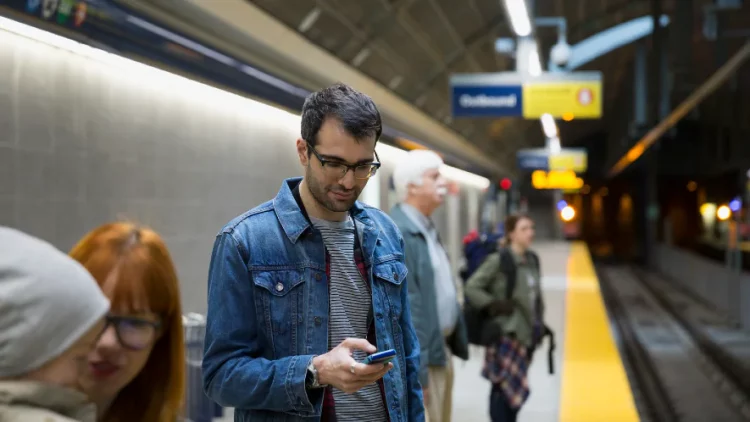There’s been no greater test for global governments in recent years than the COVID-19 pandemic.1 Not only did it provide an ongoing challenge in keeping citizens healthy, it changed the way governments operated, with many services needing to become remote. Lives, workplaces and communities were upended in unpredictable and unprecedented ways and people looked to their political leaders for certainty and comfort.
Trust in government at all levels and in all countries faltered or soared, dependent on the effectiveness of the crisis management of the pandemic. It’s a timely reminder that government needs to be responsive to build trust, and that by being so they can make cost-effective decisions and encourage growth and recovery. But not all governments are created equal, and the ability to provide access and exceptional citizen experiences can be challenging with legacy technology and oft-cumbersome red tape.
One technology could change all that.
Blockchain for government
Blockchain, also known as a distributed ledger, is a way of recording chronological information. The way it is constructed, and its information validated, makes it incredibly robust, immutable and useful. For a more detailed overview, have a read of the Digital Pulse ‘Blockchain 101’ article, but as a basic idea, a blockchain is a chain of information blocks. These blocks link together cryptographically, and the resultant information is stored across networks which are checked for valid information transactions before a new block can be added.
Public blockchains (which run cryptocurrencies among other things) allow anyone to participate, are highly decentralised and tend to be a little slower due to the time and energy needed to write new information (as it requires consensus of the group that all information is the same and in order). Private blockchains, on the other hand, can be limited to approved participants, have low or no decentralisation and tend to be faster and more environmentally friendly. Hybrid blockchains, do a bit of both.
Where blockchain is changing the game is in its trust mechanism. The technology allows information changes to be transparent, and to be amended with integrity – nothing can be added to the blockchain without being validated as legitimate and the network agreeing to its inclusion. This means that blockchain works as a single source of accessible information without the need for intermediaries.
The need for trust
Trust, the saying goes, is hard to earn and easily lost. This is especially so in relation to government.
Citizens want effortless and tailored access to government services and experiences that are innovative, human and that accomplish their goals. To be effective, governments need to understand citizen complexities to build connections, be transparent and honest in their engagement, be fair and inclusive, open and accessible – all the time. To drive value they need to measure impact and adapt, and connect across myriad government departments and agencies so experiences for the consumer are seamless.
It’s a tall order when silos are a reality and technologies won’t always play nicely together – or worse, when information exists only in paper form. Given the impact on citizen trust in government (and in that trust providing governments’ ability and mandate to govern effectively) there needs to be continued investment in digitisation beyond the pandemic.
When to use blockchain
Blockchain works especially well for governments looking to bridge silos and to connect agencies and services quickly and with precision. Its ability to let users view contents without nefarious alteration means that it is ideal when multiple parties need to share and trust data. It also allows for those parties to add their own data – in the knowledge that everyone else will be able to see and trust their changes.
For services where time is of the essence – both critical to customer experience and, given the nature of government services, often with real-world impact on citizens’ lives – blockchain speeds up interactions, removes inefficient paper trails and their inherent risks, and simplifies transactions by eliminating intermediaries (and their associated costs).
Whether looking to improve existing services or deliver new ones, blockchain can enable governments to rethink their delivery models. Incrementally, blockchain could be used to increase and improve data trust by reducing fraud and providing data provenance/authentication. It could increase efficiency and transparency across supply chains, distribute government grants, standardise data or issue licences and certifications with rapid authentication.
Innovation could see the invention of new assets, incentives, support and credit schemes via tokenisation (representation of an item and its transactional history on the blockchain – see NFTs) or even the creation of digital government service centres in the metaverse.
Not just a theory
Though blockchain has not yet transformed a citizen’s experience from birth to death, blockchain value is far from imagined. Here are just a few examples of the technology already being used in government services.
-
Land registration – Managing land registry, administration and transactions via digital tokens representing property ownership.
-
Agriculture – Making the supply chain more secure, transparent and efficient; such as its use in small farmer co-operatives.
-
Healthcare – Use in health record data management and data protection, point-of-care genomics and testing.
-
Birth & death registration – Digitisation of birth and death records thanks to blockchain’s immutability and inbuilt provenance.
-
Identity & voting – Use in the digitisation of paper-based records to create a decentralised e-identity and to enable electronic voting systems.
-
Education – Streamlining verification procedures and overheads in the management of academic records.
Time for trust
While blockchain is not always the answer to government challenges, there are many scenarios where it will outdo traditional technology solutions. As governments get serious about winning trust, use cases will continue to emerge. In the meantime, look beyond the misconceptions, frame the problems you face and outline potential solutions. Start small to prove value – opportunity to scale solutions across government and provide even greater citizen value will follow.
Stay tuned for our next article on how governments around the world are utilising blockchain in coming weeks.
Source by www.pwc.com.au






























